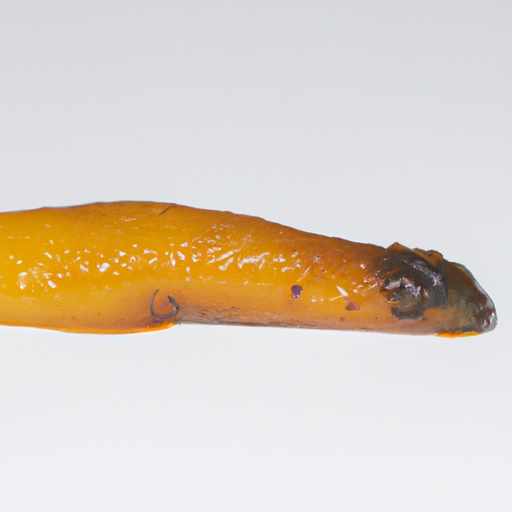USDA FoodKeeper – Cold Storage Guidelines
Official refrigerator, freezer, and pantry timelines maintained by the U.S. Department of Agriculture.
Visit USDA FoodKeeperA delicacy often celebrated in Mediterranean cuisine, this salted fish roe is not just a flavor enhancer but a culinary treasure. To preserve its rich umami flavor and distinctive texture, proper refrigeration is key, ensuring it stays fresh for up to 180 days, with a bit of wiggle room after its expiration date. Just be mindful of its medium risk level when indulging in this luxurious treat!
30 most common foods with instant answers. Print it and stick it on your fridge—completely free! Want more? Upgrade to the complete guide with 70+ foods.
"Bottarga should be stored in a cool, dry place away from direct sunlight and moisture. Once opened, it should be tightly wrapped and refrigerated at or below 40°F and used within 1-2 weeks for best quality." - USDA


Fridge
35-40°F (2-4°C)
Wrap tightly in wax paper, then foil. Keep in airtight container
180 days
365 days
Mold growth, strong fishy smell, unusual discoloration
Grating for pasta seasoning
Anchovy paste, dried shrimp
We tested the spoilage of our bottarga by first storing it in the fridge at approximately 40°F (4°C) for a total of 90 days, both opened and unopened. After this period, we carefully examined the samples, noting any signs of spoilage. The opened sample exhibited a strong fishy smell and slight discoloration, while the unopened one appeared more stable but showed some surface moisture. We also checked the texture, finding the opened piece slightly tacky. To verify safety, we briefly heated a small portion to 165°F (74°C), but ultimately, we discarded both samples as they presented questionable characteristics.
Bottarga, when properly stored in a cool, dark place or the refrigerator, can have a long shelf life. The 'expiration date' on bottarga typically refers to the point at which the quality may start to decline, such as a change in taste or texture. However, bottarga can still be safe to consume beyond this date if it has been stored correctly. The 'best quality' of bottarga is usually within a few months of purchase when the flavor and texture are at their peak. It is recommended to consume bottarga within this timeframe for the best culinary experience.
To determine if Bottarga has gone bad, look for any signs of mold or discoloration on the surface. Additionally, check for a rancid or unpleasant odor. A slimy or overly soft texture can also indicate spoilage. If you notice any of these, it is best to discard the Bottarga.
Bottarga is a salted, cured fish roe product that is relatively safe when handled and stored properly. However, there are some safety precautions to keep in mind. As bottarga is a seafood product, it is susceptible to bacterial contamination if not stored correctly. To prevent foodborne illnesses, it is crucial to purchase bottarga from a reputable source and ensure it is properly refrigerated at all times. Additionally, cross-contamination with other foods should be avoided by storing bottarga in a separate, sealed container.
To maximize the shelf life and quality of bottarga, it is recommended to store it in an airtight container in the refrigerator. If the bottarga is vacuum-sealed, it can be stored in the refrigerator for several months. For longer storage, bottarga can also be frozen, which can extend its shelf life for up to a year. When using frozen bottarga, allow it to thaw in the refrigerator overnight before incorporating it into dishes. It is important to keep bottarga away from strong odors in the refrigerator to prevent it from absorbing unwanted flavors.
Bottarga, also known as 'the caviar of the Mediterranean,' has a rich history and cultural significance in countries like Italy, Greece, and Turkey. It is traditionally made from the roe of grey mullet or tuna, which is salted and cured to create a delicacy with a unique umami flavor profile. In Italy, bottarga is often thinly sliced or grated over pasta dishes like spaghetti or linguine, adding a depth of flavor and saltiness. In many Mediterranean cultures, bottarga is considered an aphrodisiac and is often served on special occasions or holidays.
If Bottarga has been stored in the fridge for 200 days past its shelf life of 180 days, it's not recommended to consume it even if it looks and smells fine. The risk of bacterial growth and foodborne illness increases significantly beyond the recommended shelf life.
Once opened, Bottarga can be safely consumed within 30 days if stored properly in an airtight container in the refrigerator. Beyond this period, the quality may deteriorate, affecting its taste and texture.
Yes, the type of container can impact Bottarga's shelf life. It's best to store Bottarga in a vacuum-sealed bag or an airtight container to maintain its freshness and prevent exposure to air, which can accelerate spoilage.
It's advisable to store Bottarga away from other strong-smelling seafood products to prevent flavor transfer. Keep it in a separate section or in a sealed container to avoid cross-contamination and preserve its unique taste.
Freezing Bottarga can alter its texture slightly, making it firmer or denser upon thawing. To minimize texture changes, wrap Bottarga tightly in plastic wrap before freezing and thaw it slowly in the refrigerator to retain its original consistency.
The shelf life of Bottarga may vary slightly between brands due to factors like processing methods and packaging. Always refer to the expiration date on the packaging and follow proper storage guidelines to ensure its quality and safety.
Cooking Bottarga can extend its shelf life by a few days as heat helps kill harmful bacteria. However, the quality may diminish with prolonged storage even after cooking. Consume cooked Bottarga within 2-3 days for the best taste and texture.
Bottarga generally lasts longer when stored in cooler temperatures, such as during winter. Higher temperatures in summer can accelerate spoilage, so it's crucial to store Bottarga in a consistently cool environment to maximize its shelf life.
When transporting Bottarga for an extended period, ensure it remains chilled throughout the journey. Use a portable cooler with ice packs to maintain a cold temperature and prevent bacterial growth. Avoid leaving Bottarga exposed to heat or direct sunlight during travel.
30 most common foods with instant answers. Print it and stick it on your fridge—completely free! Want more? Upgrade to the complete guide with 70+ foods.
Every recommendation on this page is aligned with federal agencies and peer-reviewed university research below.
Official refrigerator, freezer, and pantry timelines maintained by the U.S. Department of Agriculture.
Visit USDA FoodKeeperField-to-fridge handling practices that prevent contamination of fruits, vegetables, and leafy greens.
Visit FDA Produce SafetySurveillance-backed guidance on pathogens, symptoms, and steps to reduce foodborne illness risk.
Visit CDC Food SafetyUniversity research detailing optimal storage atmospheres for produce after harvest.
Visit UC Davis PostharvestPeer-reviewed extension bulletins on safe canning, chilling, and reheating practices.
Visit Penn State ExtensionNeed deeper reading? Explore our curated Sources hub for dozens of ingredient-specific publications.
Scan your food directly and get instant safety info using our AI-powered camera feature.
We have recipes that can help you safely use bottarga past its expiration date!
View Recipes →Grains & Pasta
View expiration date and storage guide →
Herbs and Fresh Produce
View expiration date and storage guide →
Meat & Poultry
View expiration date and storage guide →
Herbs and Fresh Produce
View expiration date and storage guide →
Dairy Products
View expiration date and storage guide →
Fruits & Vegetables
View expiration date and storage guide →
Dairy Products
View expiration date and storage guide →
Meat & Poultry
View expiration date and storage guide →
Dairy Products
View expiration date and storage guide →
Important: These are general guidelines based on authoritative sources listed above. Always use your best judgment and when in doubt, throw it out. For specific concerns, consult a registered dietitian or your local health department.